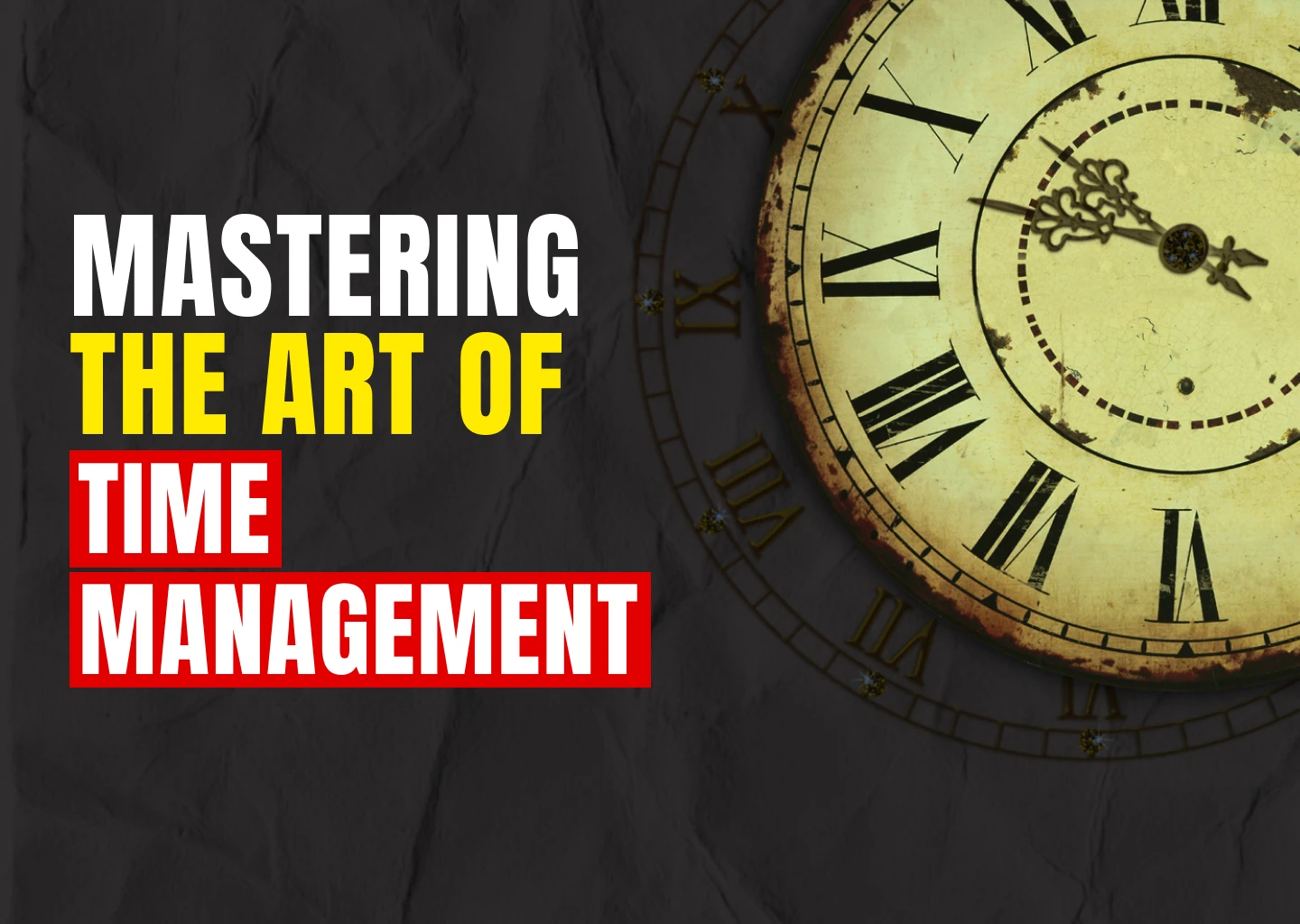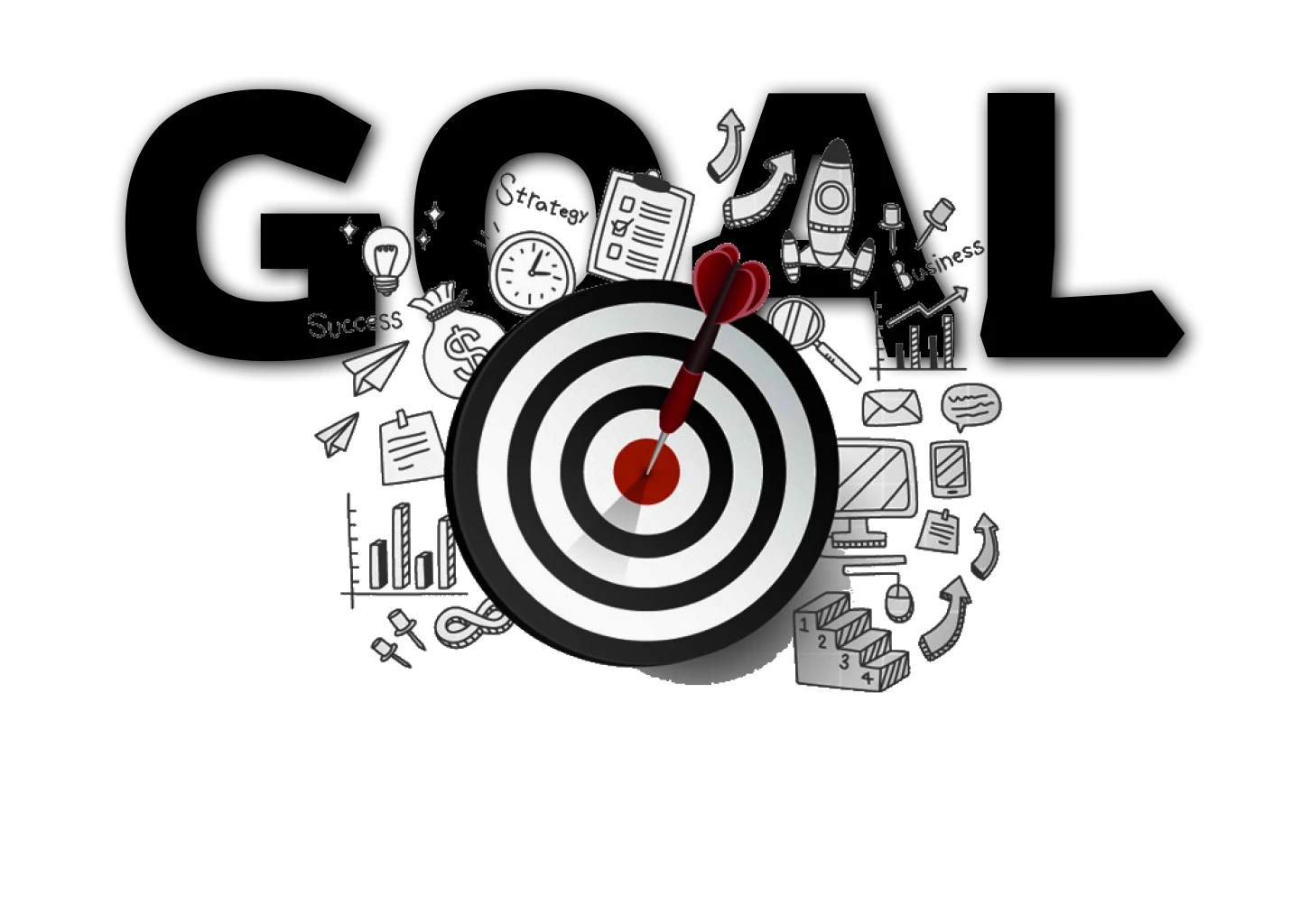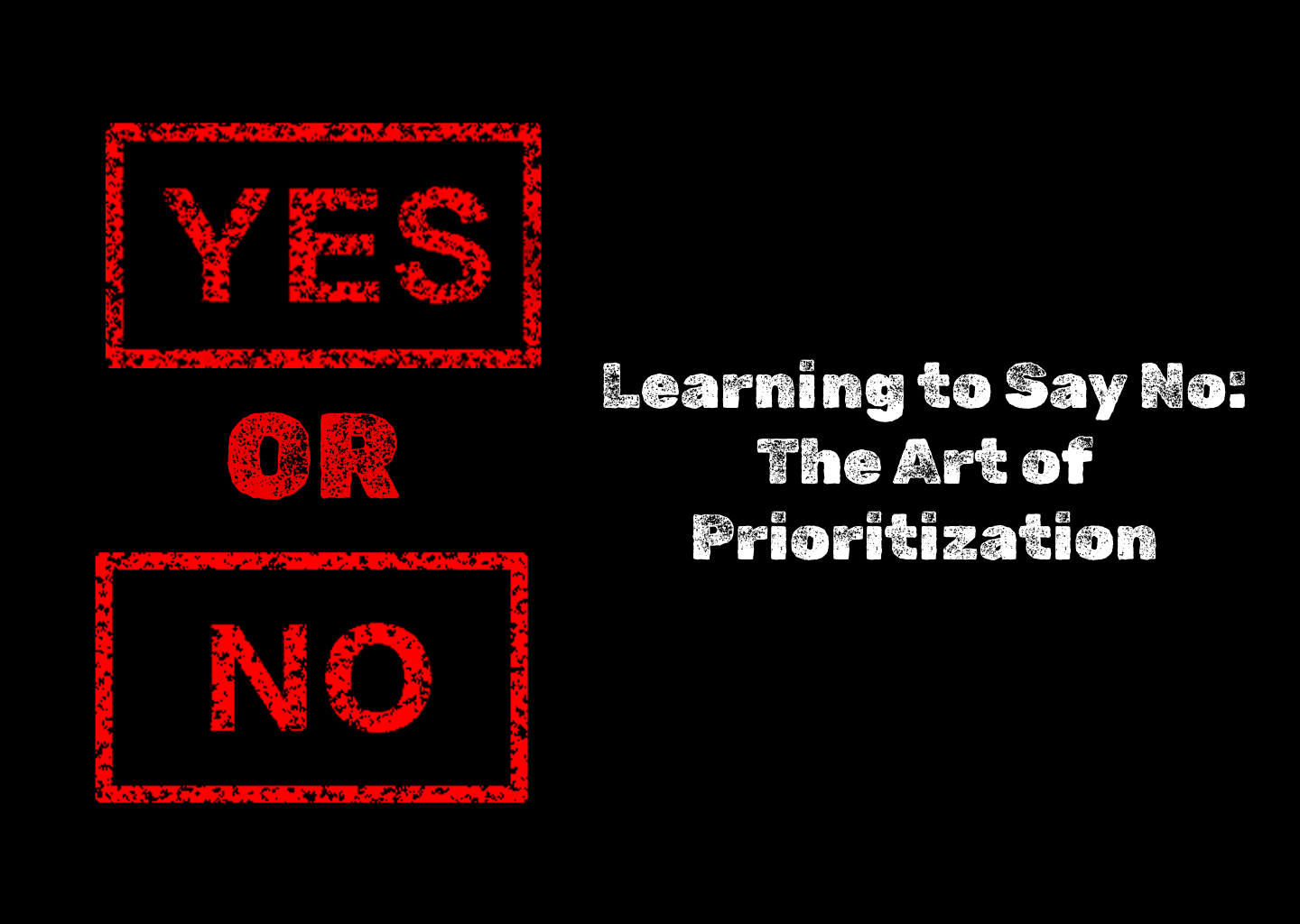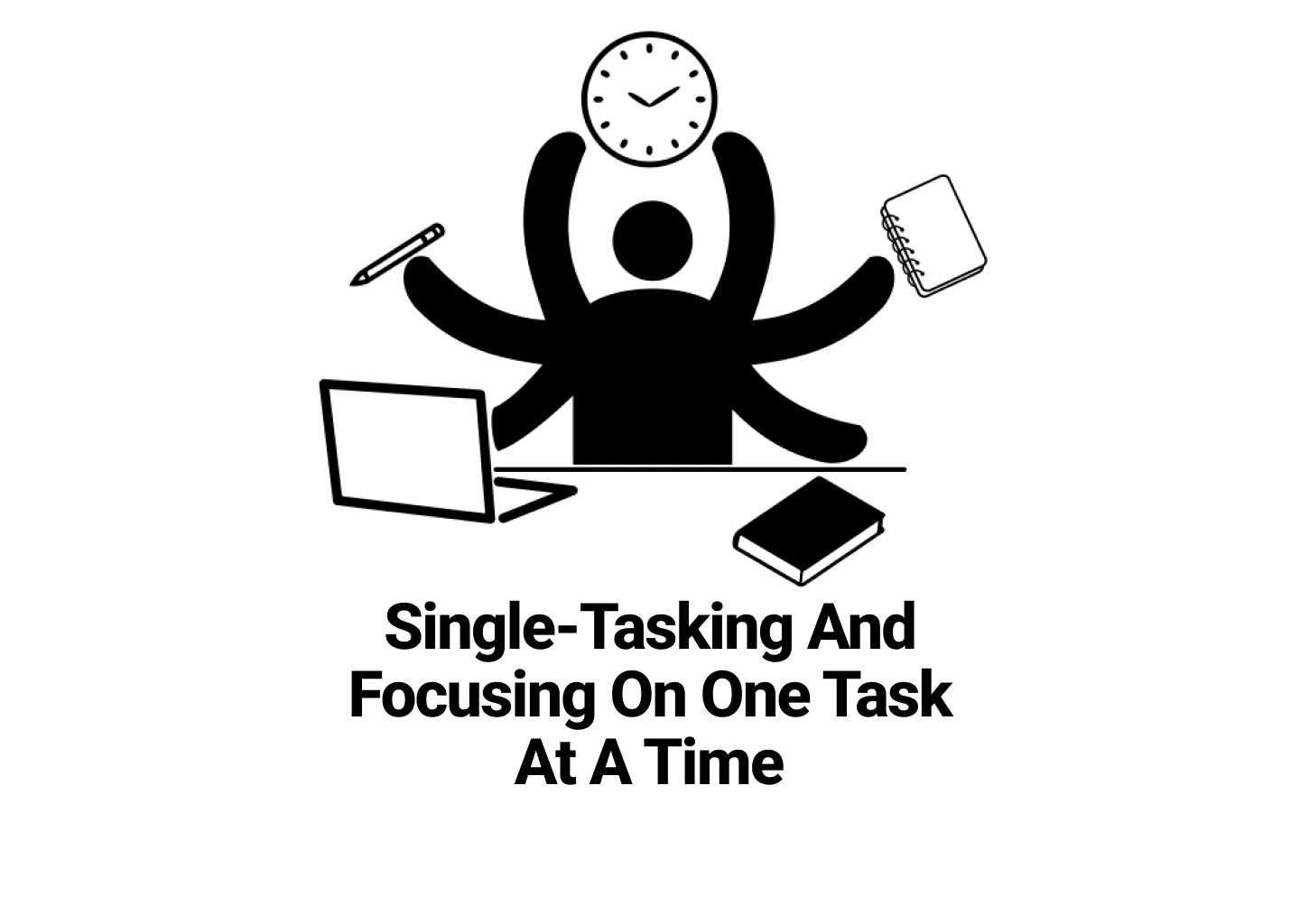
Mastering time for focused work is like wielding a powerful tool that can unlock your full potential.
why:
- Increased Productivity: When you set up particular time blocks for concentrated work, you experience "flow," a profound state of concentration. This increases your total productivity by enabling you to do more tasks in less time.
- Better Decision-Making: Concentrated work reduces interruptions and enables vital information analysis. Because you aren't distracted by outside sounds, you can make better decisions.
- Decreased Stress: Stress and mental exhaustion can result from constantly multitasking and alternating between tasks. Conversely, focused labor lowers stress levels by giving one a sense of accomplishment and control.
- Enhanced Quality of Output: When you are completely immersed in a task, the quality of your work significantly improves. Concentrated efforts reduce the likelihood of mistakes and guarantee that your results align with your expectations.
- Increased Creativity: Engaging in focused work can stimulate creativity. Allowing your mind uninterrupted time to contemplate ideas enables you to develop innovative solutions and gain new insights.
- Goal Achievement: You may divide big jobs into smaller, more manageable pieces by working with focus. This facilitates goal achievement and helps you stay on course.
- Work-Life Balance: You can improve your work-life balance by learning how to set aside time for concentrated work. Your life will be more rewarding since you'll have more time for hobbies and personal interests.
The Power of Prioritization

The Power of Prioritization: Focusing on What Matters
In the contemporary, rapidly evolving environment, individuals often find themselves inundated with a multitude of responsibilities. To enhance productivity while reducing stress levels, it is essential to prioritize tasks efficiently. By recognizing tasks that yield the greatest impact and concentrating on what is genuinely important, one can accomplish more with reduced effort.
Key Techniques for Prioritization:
Eisenhower Matrix: Important but Not Urgent, Urgent but Not Important, Urgent but Not Important, and Neither Urgent nor Important are the four quadrants into which this time management tool divides jobs. Concentrating on the "Important and Urgent" quadrant allows you to prioritize things that need urgent attention and have a big impact.
ABCDE Method: Allocate a letter from A to E to each task, where A represents the highest priority and E signifies the lowest. This approach enables you to swiftly recognize and prioritize tasks according to their urgency and significance.
Time Blocking: Set up particular time slots for various purposes. By using this strategy, you can prevent multitasking, which can reduce productivity.
Eat the Frog: This technique entails starting your most difficult or unappealing chore first thing in the morning. You'll feel more accomplished and have more energy for the remainder of the day if you finish the hardest chore first.
Mindful Prioritization: Evaluate your priorities on a regular basis and make necessary adjustments. Prioritize tasks that are consistent with your values and ambitions.
Tips for Effective Prioritization:
- Establish Clear Objectives: To help you prioritize your tasks, establish both short- and long-term objectives.
- Don't overcommit yourself: learn to say no. If more work or duties don't fit with your priorities, politely decline them.
- Large jobs should be broken down into smaller, easier-to-manage subtasks. They become easier to prioritize and less intimidating as a result.
- Use Time Management Tools: Utilize tools like calendars, to-do lists, and time tracking apps to help you stay organized and focused.
- Regularly Review and Adjust: Regularly review your priorities and make adjustments as needed.
Effective Goal Setting

Setting effective goals is a crucial approach to enhance time management and maintain focus on what is most important. By establishing realistic and attainable objectives, individuals can not only structure their tasks more efficiently but also find motivation to achieve consistent progress. Below are several techniques to effectively set and achieve your goals.
Establishing SMART Goals: A widely recognized approach for formulating precise objectives is the SMART framework, which encompasses Specific, Measurable, Achievable, Relevant, and Time-bound criteria. For instance, the goal of “exercising more” lacks clarity; however, by refining it to a SMART goal—“take a 30-minute walk five times a week for the upcoming month”—you create a definitive action plan that is straightforward to monitor and adhere to.
Break Down Large Goals: Having Large Goals can be intimidating, so it can help to break them down into smaller, more doable steps. If your objective is to earn a certification, for instance, divide it into manageable chunks, such as "review the syllabus," "study one module per week," and "take a practice test each month." Smaller stages encourage you with consistent development and make each step of the path more achievable.
Establish Priorities: Not every goal is equally important. Determine which ones best reflect your values and long-term goals. By concentrating on these top priorities, you may avoid feeling overburdened by attempting to accomplish too many things at once and make sure that your time and effort are being used for what really matters.
Reflect and Modify: Reflecting regularly enables you to evaluate your progress and make necessary modifications. You can assess what's working and what isn't by reviewing your goals once a week or once a month. This allows you to make necessary adjustments and stay on course.
Establishing clear and attainable goals enhances productivity while simultaneously fostering confidence as each milestone is achieved. This strategy aids in effective time management, maintains concentration, and facilitates a consistent progression toward success.
Time-Blocking Techniques
Time-Blocking Techniques: A Strategic Approach to Productivity
One effective time management strategy is time-blocking, which is setting aside certain time slots for various tasks. You may dramatically increase your focus, productivity, and general work-life balance by setting out certain time slots for different activities.
How Time-Blocking Works
- Choose Crucial Tasks: To begin, choose which tasks are most crucial to do.
- Allocate Time Slots: Give each task a set time block, taking into account variables like importance, urgency, and energy levels.
- Make a Schedule Visually: Make a visual depiction of your schedule using a calendar or other digital tool.
- Keep to the Timetable: When you have set aside for work, stick to your routine and avoid interruptions.
Benefits of Time-Blocking
- Enhanced Focus: You can reduce distractions and increase your focus by allocating specified time blocks to specific tasks.
- Enhanced Productivity: Time-blocking facilitates effective time allocation and task prioritization, which boosts output.
- Reduced Stress: By having a clear plan for your day, you can reduce stress and anxiety.
- Improved Time Management: Time-blocking helps you manage your time effectively and avoid procrastination.
- Improved Work-Life Balance: You can attain a better work-life balance by setting up particular time slots for work and personal pursuits.
Tips for Effective Time-Blocking
- Don't overschedule yourself: be realistic. Give each task a realistic time block.
- Be Adaptable: Be ready to change your plans as necessary. Be versatile and flexible since unexpected things can happen.
- Prioritize Tasks: Identify the most important tasks and allocate adequate time.
- Minimize Distractions: Create a distraction-free environment by turning off notifications, closing unnecessary tabs, and finding a quiet workspace.
- Incorporate Breaks: Plan brief daily intervals to allow your mind to rest and rejuvenate.
- Evaluate and Modify: Consistently assess your timetable and make necessary modifications.
You can manage your time, increase your productivity, and accomplish your objectives by implementing time-blocking into your daily routine. Try out a variety of time-blocking strategies to determine which one suits you the best. Recall that discipline and consistency are the keys to success.
Embracing the Pomodoro Technique
The Pomodoro Technique is a widely recognized method for time management that aims to enhance concentration and increase productivity by dividing work into concentrated intervals. Created by Francesco Cirillo in the 1980s, the technique derives its name from the Italian term for "tomato" (Pomodoro), as Cirillo originally utilized a tomato-shaped kitchen timer to monitor his work sessions. Over the years, the Pomodoro Technique has gained popularity among individuals looking for a systematic yet adaptable strategy for time management and task completion.
How it works
The Pomodoro Technique is simple: you work in concentrated 25-minute bursts, or "Pomodoros," and then take a little break. You take more time to rest after finishing four Pomodoros. Here's a detailed explanation of how to apply this strategy successfully:
- Select a Task: Choose the task you wish to work on first. This could be any activity that calls for concentration, such as reading, studying, or a work endeavor. To prevent your focus from wandering, it is best to assign each Pomodoro to a single, focused job.
- Set a Timer for 25 Minutes: Decide to work on the activity without interruptions for 25 minutes after setting a timer. It's usually simpler to get started when you know you only have to focus for a short period, especially when dealing with intimidating chores.
- Work Without Interruption: During these 25 minutes, focus entirely on the task at hand. Avoid checking emails, social media, or other distractions. The limited timeframe encourages a sense of urgency, which often helps people work more effectively and resist the urge to procrastinate.
- Pause for Five Minutes: After the timer sounds, pause for five minutes. Take a break from your work, stretch, have a drink, or just unwind for a while. You can mentally recharge and get ready for the next Pomodoro with this respite.
- Repeat and Reward: Take a lengthier 15–30 minute break after doing four Pomodoros. Your brain can fully recharge with this longer rest, which lessens weariness and increases productivity.
Benefits of the Pomodoro Technique
The Pomodoro Technique offers several benefits:
Increased Focus: It can be easier to concentrate when you know you only have 25 minutes to do so, especially while working on difficult or tiresome jobs. Distractions are discouraged by the structure created by the predetermined intervals.
Enhanced Motivation: Offering a break at the end of each Pomodoro might serve as a powerful incentive. Even big projects seem doable because they divide work into smaller, more manageable chunks.
Better Time Awareness: Working with a timer increases your awareness of how long tasks take, which helps improve time estimation skills over time.
Decreased Burnout: The Pomodoro Technique lowers the risk of burnout by implementing regular breaks. It guarantees that you stay psychologically rejuvenated throughout the day and promotes sustainable work habits.
Getting Started with the Pomodoro Technique
To begin utilizing the Pomodoro Technique, the only requirement is a timer. Applications such as Pomodone, Focus Booster, or even the timer available on your mobile device can serve this purpose effectively. With consistent practice, this method can evolve into an essential component of your time-management strategy, enabling you to maintain productivity, concentration, and vitality throughout your day.
Learning to Say No

Learning to Say No: The Art of Prioritization
It's simple to feel overburdened by the demands of our time in the fast-paced world of today. Saying "yes" to everything that is asked of us frequently results in burnout and lower productivity. But being able to say "no" is a strong talent that can help us safeguard our time and energy so that we can concentrate on the things that count.
Why Saying No is Important
Maintaining Mental and Physical Health: Stress, worry, and physical fatigue can result from overcommitting.
Maintaining Work-Life Balance: You can improve your work-life balance by saying "no" to non-essential chores.
Increasing Productivity and Focus: You can improve the caliber of your work and your productivity by concentrating on a smaller number of high-priority assignments.
Strengthening Relationships: When you say "no" to certain requests, you're being honest with yourself and others, which can strengthen your relationships.
How to Say No Effectively
Respond to the Request: Begin by accepting the request and expressing gratitude to the individual for considering you.
Show Appreciation: Express gratitude for the chance or offer.
Identify Your Limitations: Give a detailed explanation of your inability to complete the work. Don't be too sorry, but be straightforward and honest.
Overcoming the Fear of Saying No
Saying "no" is difficult for many people because they worry about disappointing other people or coming across as self-centered. But it's crucial to keep in mind that your health comes first. By developing the ability to say "no," you're establishing sound limits in addition to protecting yourself.
Tips for Saying No with Confidence:
- Practice Self-Awareness: Understand your limits and priorities.
- Visualize the Outcome: Imagine how you'll feel if you say "yes" or "no."
- Role-Play: Practice saying "no" in different scenarios.
- Start Small: Begin by saying "no" to small, low-priority requests.
- Be Assertive: Speak clearly and confidently.
By mastering the art of saying "no," you can take control of your time, reduce stress, and achieve a higher level of productivity and fulfillment. Remember, it's not about being selfish; it's about prioritizing your well-being and setting boundaries that allow you to thrive.
Delegation as a Time-Saving Skill
Delegation serves as a vital time-management skill that can greatly improve both productivity and efficiency. Understanding the appropriate moments and methods for delegating tasks enables leaders and team members to concentrate on their most essential duties while also empowering others to play an active role. By skillfully allocating responsibilities, we can optimize resources, alleviate stress, and collectively attain superior outcomes.
Identify Tasks for Delegation
Delegating begins with determining which duties can be assigned to others. Delegation works best for administrative responsibilities, repetitive or routine chores, and areas where others may possess specialized knowledge. You may devote more of your valuable time to high-impact activities that call for your special abilities or insights when you assign these chores to others.
Match Tasks to Strengths
Delegating effectively involves matching tasks to the appropriate individuals, not just assigning labor. Assigning tasks according to each person's interests, talents, and strengths results in a productive workflow where everyone on the team feels capable and appreciated. This method not only raises the caliber of the work but also increases team confidence and morale.
Communicate Clearly and Set Expectations
For delegation to be successful, it’s crucial to provide clear instructions and outline expected outcomes. It is essential to provide precise information regarding deadlines, quality expectations, and any pertinent details. Effective communication guarantees that both parties are on the same page, thereby decreasing the necessity for micromanagement and lessening the likelihood of misunderstandings.
Empower and Trust
It is essential to refrain from micromanaging once tasks have been assigned. Place your confidence in your team to manage their duties effectively, providing support and direction as necessary, while granting them the freedom to address challenges and make choices. This level of trust cultivates a sense of ownership and enhances self-assurance, ultimately reinforcing the team's capacity to operate autonomously.
Reflect and Adjust
After a task is finished, give the delegating process some thought. Was the result what was anticipated? Did the delegation increase productivity and save time? Over time, you can improve your delegation abilities by learning from each event.
The goal of delegation is to establish a well-balanced, efficient workflow that capitalizes on each person's strengths, not only to do tasks more quickly. Gaining proficiency in delegation empowers our teams, frees up time for strategic work, and lays the groundwork for long-term success.
Avoiding Multitasking

The Myth of Multitasking: Why Single-Tasking is the Key to Productivity
Multitasking, defined as the capacity to manage several tasks at once, has often been promoted as a means to enhance productivity. Nevertheless, studies indicate that multitasking may reduce productivity and elevate stress levels. The reality is that our brains are not equipped to transition effectively between different tasks. In contrast, single-tasking, which involves concentrating on one task at a time, tends to yield superior results, heightened focus, and enhanced work quality.
The Downsides of Multitasking
- Decreased Productivity: Our brains need time to recalibrate when we switch between tasks, which lowers our total productivity.
- Increased tension: Because we are often concerned about doing several activities at once, multitasking can cause emotions of overload and tension.
- Reduced Quality Work: Multitasking can lead to more errors and the omission of crucial details, which can lower the quality of our work.
- Inability to Concentrate: It can be challenging to focus and stay focused on any one task when you are constantly flipping between them.
The Power of Single-Tasking
- Increased Focus: You can increase your attention to detail and concentration by concentrating on one task at a time.
- Increased Creativity: When you focus on just one thing at a time, your mind might roam and come up with innovative ideas.
- Reduced Stress: By focusing on one task at a time, you can reduce feelings of overwhelm and stress.
- Increased Productivity: Single-tasking can lead to increased productivity, as you can complete tasks more efficiently and effectively.
Tips for Effective Single-Tasking
- Time Blocking: Set up particular time slots for various purposes.
- Reduce Distractions: Find a quiet place to work and turn off notifications to create a distraction-free workplace.
- Set Task Priorities: Decide which tasks are most crucial, then give them your full attention.
- Take Breaks: Plan little pauses to allow your mind to relax and rejuvenate.
- Practice mindfulness: You may maintain your focus and present-moment awareness by using mindfulness techniques.
You can realize your full potential and increase your level of productivity and enjoyment by adopting single-tasking. Keep in mind that doing fewer things well is more important than doing more.
Leveraging Technology for Productivity
One of the best strategies to keep organized, manage work, and improve performance is to use technology for productivity. We can streamline daily tasks, monitor our progress, and store everything in one location with the correct tools, apps, and tactics, freeing us up to concentrate more on the important things.
Task Management Apps
Task management applications such as Trello, Asana, and Todoist facilitate the organization and prioritization of tasks. These platforms enable users to develop to-do lists, establish deadlines, delegate tasks to team members, and decompose projects into smaller, more manageable components. Featuring visual boards, tagging systems, and notification alerts, these applications help ensure that no detail is overlooked. Utilizing a digital planner allows for the effective tracking of daily responsibilities in a streamlined manner, thereby aiding in the management of significant tasks and deadlines.
Time Tracking and Productivity Tools
By tracking where time is spent, apps like RescueTime, Toggl, and Clockify make it simpler to spot areas that need work. These technologies may even classify time spent on websites or apps and offer comprehensive reports that display the amount of time spent on each job or project. By monitoring your productivity, you can see patterns, get insight into your work habits, and maximize your day by removing distractions.
Calendar and Scheduling Software
For meeting scheduling, reminder setup, and daily or weekly agenda organization, Google Calendar, Microsoft Outlook, and Calendly are indispensable tools. You can attach tasks to events, set automated reminders, and even share schedules with customers or colleagues thanks to the seamless integration of many of these tools with other productivity apps. You may avoid scheduling conflicts and make sure you have adequate time for each task by having a clear picture of your day when you visually block out your time.
Note-taking and Idea Management
Applications such as Evernote, Notion, and OneNote facilitate the capture of ideas, the organization of thoughts, and the creation of digital notebooks. These tools enable users to record ideas, save articles, store images, and develop a structured system for managing all their information. They are particularly well-suited for brainstorming and monitoring ideas in a manner that is readily accessible at any time.
Making Technology Work for You
Technology becomes a powerful productivity ally when used thoughtfully. Rather than overwhelming yourself with too many tools, focus on finding a select few that fit your needs and learning to use them effectively. You may increase productivity, enhance attention, and streamline processes by utilizing tools and applications that complement your working style. This kind of technological adoption changes daily routines, making it simpler to accomplish objectives and preserve equilibrium in our fast-paced society.
Building a Consistent Routine
Building a Consistent Routine: Your Key to Productivity
The foundation of efficient time management is a regular schedule. You may increase productivity, decrease stress, and improve your workflow by creating a daily routine. A well-designed routine serves as a dependable structure that directs your activities and keeps you on course.
Why Routines Matter
Improved Focus: Sticking to a schedule makes it easier to stay focused and block out distractions.
Enhanced Productivity: You may complete more tasks in less time by optimizing your workflow.
Reduced Stress: An organized schedule lowers anxiety and gives one a sense of control.
Improved Decision-Making: A consistent routine helps you make better decisions by eliminating the need for constant decision-making.
Better Work-Life Balance: A well-balanced routine allows you to allocate time for both work and personal life.
Creating Your Ideal Routine
- Find Your Best Times for Productivity: Find out when you're most attentive and concentrated. Plan your most difficult assignments for these busy times.
- Set Task Priorities: Prioritize tasks according to their importance and urgency by using time management strategies like the ABCDE Method or the Eisenhower Matrix.
- Make a Doable Schedule: Establish attainable objectives and designate distinct time slots for each work.
- Include Flexibility: Make sure your schedule is adaptable to unforeseen circumstances.
- Establish a Morning Routine: A strong morning routine can set the tone for the rest of your day. Consider activities like meditation, exercise, or journaling.
- Create a Nighttime Routine: A calming nighttime routine can help you wind down and prepare for a good night's sleep.
Tips for Sticking to Your Routine
- Start Small: Modify your habit in tiny, doable steps at first.
- Be Reliable: Maintain your schedule, even on the weekends.
- Monitor Your Progress: To monitor your progress, keep a journal or use a productivity tool.
- Honor Significant Occasions: Give yourself a reward when you reach your objectives.
- Be Adaptable: Don't be scared to change your routine when necessary.
A consistent routine should be viewed as a journey rather than a final goal. Establishing an effective routine requires time and dedication. Exercise patience with yourself and remain open to experimentation. By developing a solid foundation of habits and routines, you can realize your full potential and attain your objectives.
Reflecting and Adjusting
Effective time management necessitates continuous reflection and adjustment. Merely establishing a plan and adhering to it without flexibility is insufficient; genuine productivity demands a consistent evaluation of what is effective and what is not, accompanied by thoughtful modifications. By routinely assessing your time management strategies, you can recognize your strengths, tackle obstacles, and discover techniques that better align with your objectives.
Begin with Self-Reflection
Examining your present time management techniques honestly is the first step towards reflection. Do you often feel overburdened, distracted, or running out of time? You can better understand what might need to be changed by pinpointing the precise areas in which you feel your time management is lacking. For example, "Which tasks consistently take longer than expected?" or "What time of day do I get the most productivity?" This knowledge is crucial for developing a strategy that works better.
Track Your Time and Analyze Patterns
Monitoring time extends beyond merely understanding the duration of tasks; it uncovers your work habits and tendencies. Utilizing applications such as Toggl, RescueTime, or even manually recording start and end times can illuminate periods of peak productivity and instances where time appears to be lost. By analyzing patterns over several days or weeks, you might discover, for instance, that your concentration is highest in the morning, or that specific tasks require more time in the afternoon. Identifying these trends enables you to allocate tasks during the most advantageous times, thereby improving focus and overall efficiency.
Make Incremental Adjustments
Try making minor changes to your schedule based on your findings rather than completely changing it all at once. For instance, start setting aside that time especially for high-priority work if you find that concentrating on tough projects first thing in the morning boosts productivity. Try to reduce or get rid of any distractions that cause you to lose attention regularly. Little adjustments are easier to handle and frequently simpler to sustain over time.
Set New Goals Regularly
Your time management objectives should change as your priorities and responsibilities do. Think about reviewing your goals every month or every three months to make sure they still fit with your overall aims. If you've mastered daily planning, for instance, think about advancing to weekly or monthly planning to obtain a more comprehensive viewpoint. Creating new objectives keeps your strategy fresh and current.
Embrace Flexibility
Effective time management hinges on the ability to balance structure with adaptability. Given the unpredictable nature of life, it is often necessary to adjust even the most carefully crafted plans. Embracing change and being prepared to alter your routine in response to evolving circumstances can help mitigate frustration and ensure continued progress, even when things do not unfold as anticipated.
Reflect, Adjust, and Grow
One effective habit that helps you keep your time management techniques in line with your needs is reflecting and making adjustments. You may continuously improve your strategy to determine what actually works best by conducting routine evaluations and making little adjustments. In addition to increasing productivity, this fosters personal development and gives you the ability to adjust, get better, and succeed over the long term.
Time management is a life-changing ability that increases output, lowers stress, and makes space for personal development. Setting priorities, concentrating on high-impact tasks, and establishing reasonable, attainable goals are the first steps in the trip. Routines create regularity and help organize daily living, while time-blocking and the Pomodoro technique maintains focus. By successfully allocating duties, delegating jobs enables us to work more efficiently, while learning to say "no" to non-essential chores safeguards our time. By choosing single-tasking versus multitasking, we can focus better and accomplish better results by giving each activity our whole attention. With productivity tools and apps that simplify work management and enhance organization, technology also plays a significant role. Lastly, we can make sure that we're always making the best use of our time by reflecting and modifying our strategy. Gaining an understanding of these concepts enables us to maximize each day and opens the door to achieving long-term objectives in a balanced and meaningful way.
